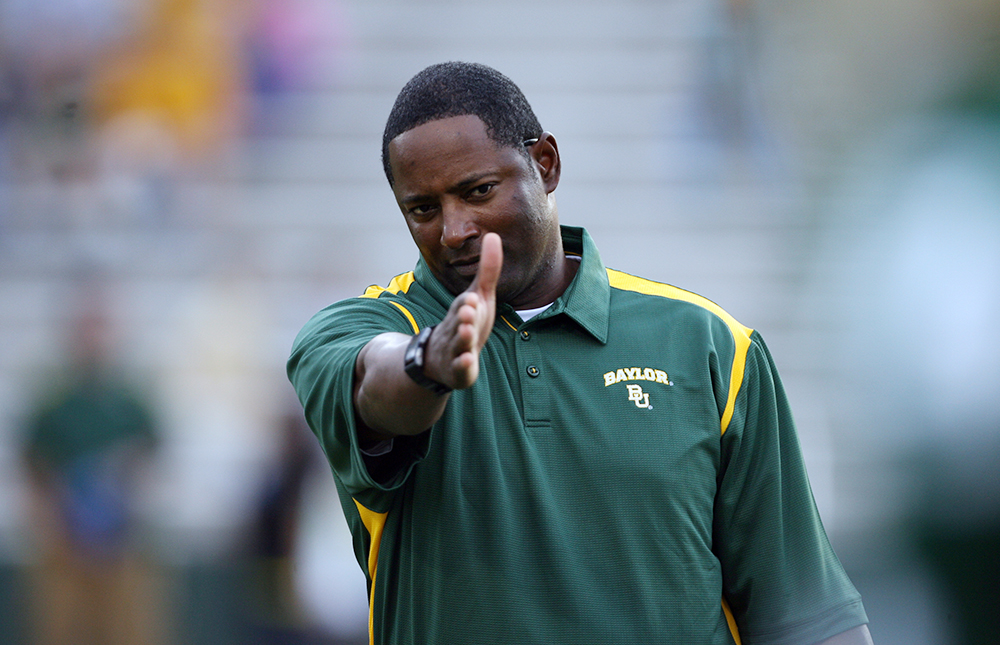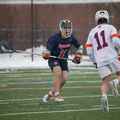The job at Northern Arizona was a defensive job. Babers dropped to FCS to reverse engineer offensive schemes by learning their defensive counterparts. That, he figured, would help round out his resume for a future head-coaching position.
All that work had gone into getting the job at Purdue. And while moving away from Purdue for his father nearly drew Babers away from coaching, he was able to make the most of it. He followed up his position at San Diego State with one at Arizona, just his second major coaching position, where he would be able to grow under Tomey.
Graduate assistant jobs were in the past, and Babers was headed to a place Tomey had spent eight years building. Babers’ fear of being eternally pitted as a player under Tomey evaporated in Tempe, Arizona. When Tomey brought Babers in, he sat him down with local high school and community college coaches for recruiting purposes.
“If you need anything,” Jeff Scurran, a coach in the meeting, remembers Tomey saying, “ask Dino.”
•••
Arizona gathered all its freshmen at the beginning of each season, and Babers led the meeting in 1996. He blazed through his speech about the jump first-year players would have to make to succeed.
“A lot of you guys won’t make it,” then-freshman defensive end Joe Tafoya remembers Babers saying. “So look around the room right now and decide if you’re going to be one of those guys.”
Bluntness, bordering on military-style intensity, was part of the Babers experience. Prior to games, Babers gave out six-page preparation tests as a position coach with Arizona. Each test had one question asking which running backs he would trust with his family if something happened to him. To play in the game, you had to score at least a 90 on the test.
He’d make players take a lap for crossing certain boundaries during drills and come out early in the morning for conditioning in return for doing poorly in classes.
“Babers is the type of coach you don’t want to disappoint,” Brad Brennan, a then-Arizona receiver said.
Against Washington, Tafoya did just that, losing contain on the edge of a play and allowing UW to score. Babers, then the running backs coach, pulled Tafoya aside.
“Hey, Joe, look at the scoreboard,” Tafoya remembers Babers saying. “You see that they’re up by seven? That’s your fault. You lost contain and they scored a touchdown, so you better make up for it.”
That made Tafoya want to “flip him off,” but he also knew Babers was right.
Babers drilled players on schemes by bringing them up to the chalkboard. He’d make them draw out plays and question them on routes that weren’t even theirs.
“Are you sure?” he’d ask them.
“I’m sure.”
“Are you sure?” he’d repeat.
Scoping out stutters, blank stares and any shred of uncertainty, Babers only ceded that a player was correct when the player was confident enough in his answer.
He pulled back the reigns on rare occasions. As a freshman walk-on, Brennan lived in a non-athlete dorm and ate with the rest of the student population. His dorm was on the opposite end of campus.
While the scholarship players walked a few steps to a meal from practice, Babers would occasionally scoop Brennan up in his 1986 Cutlass Supreme and give him a ride. There, Babers became what he was off the field: a father and a mentor who would invite his players over to his house.
Melding his personalities helped Babers build a group of players loyal to him by the time he was hired as offensive coordinator in 1998. Babers had recruited most skill-position contributors or switched their positions. Three years of recruiting and boot camp had prepared the players to play just as Babers wanted. 1998 is considered Arizona’s best year ever after they finished No. 4 in the country and won the Holiday Bowl.









